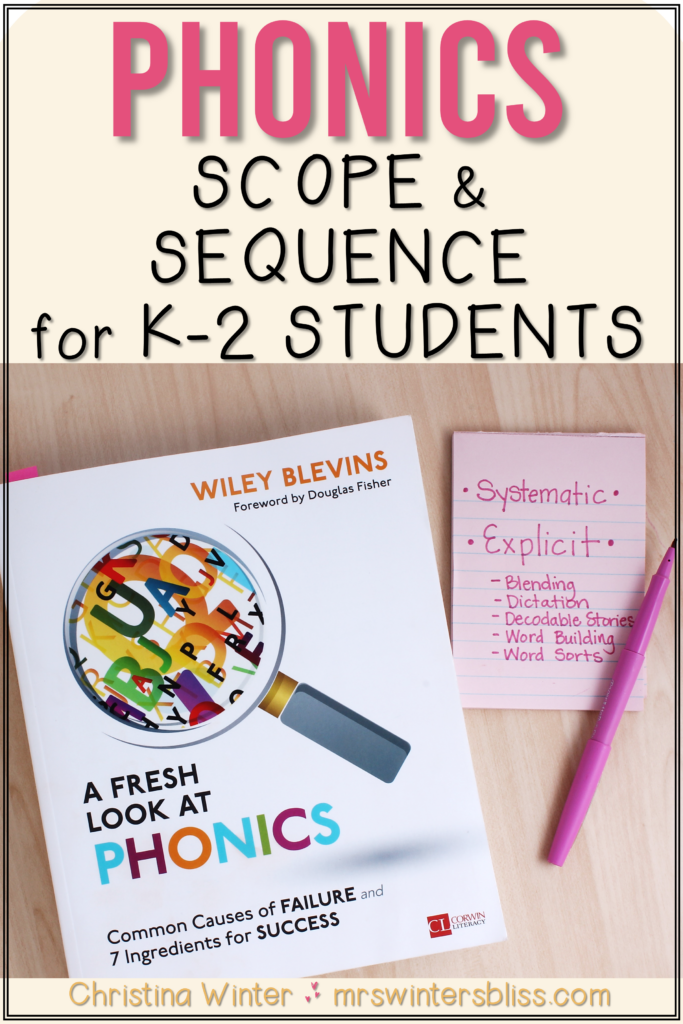
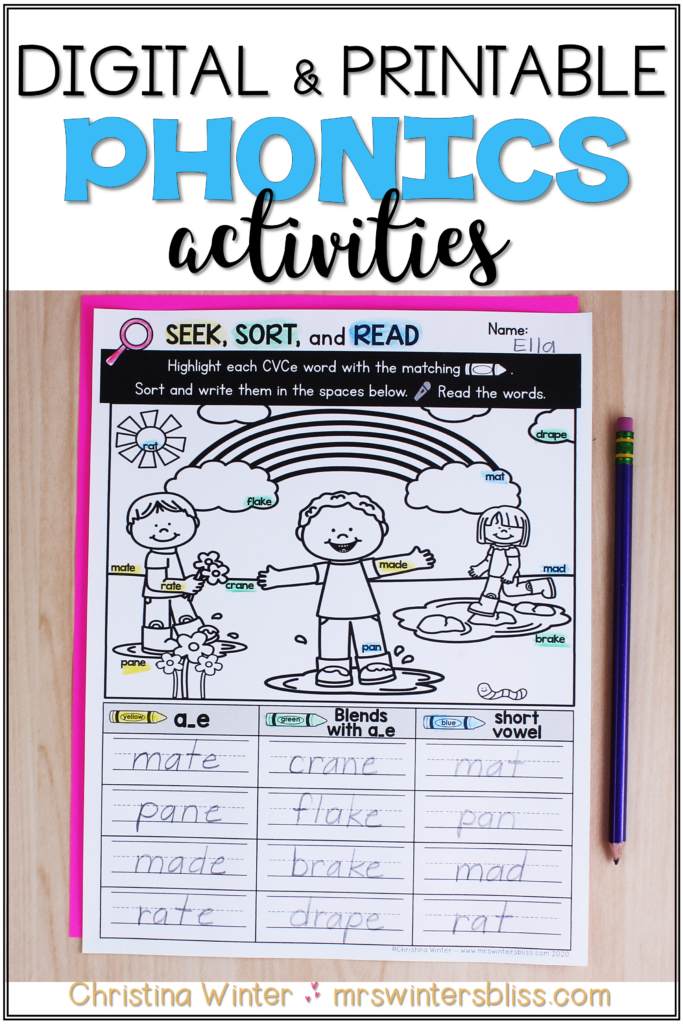

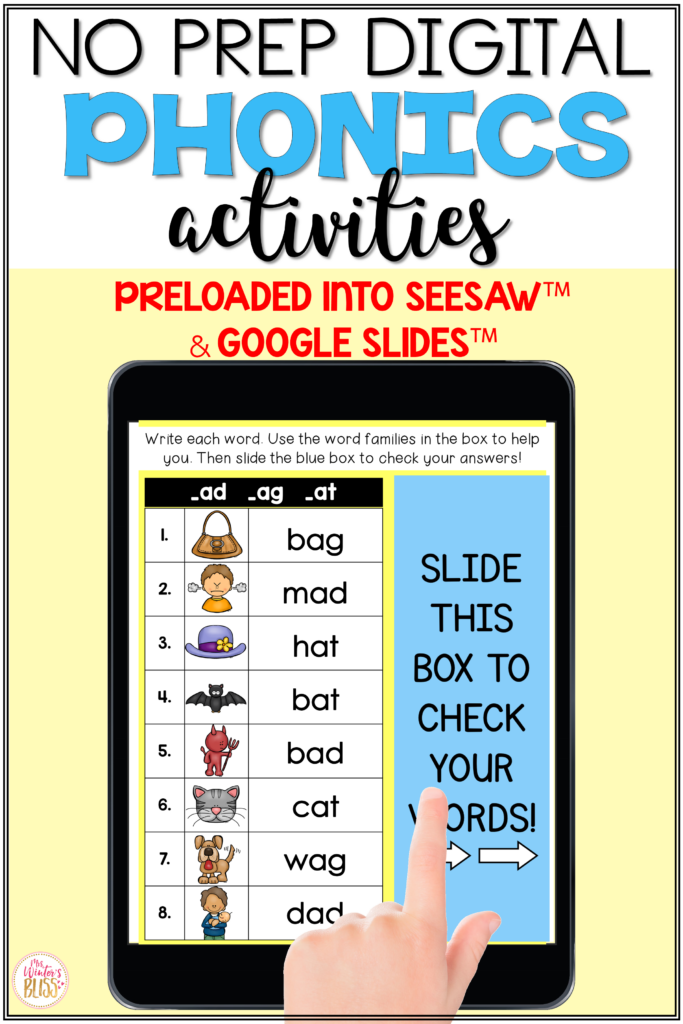
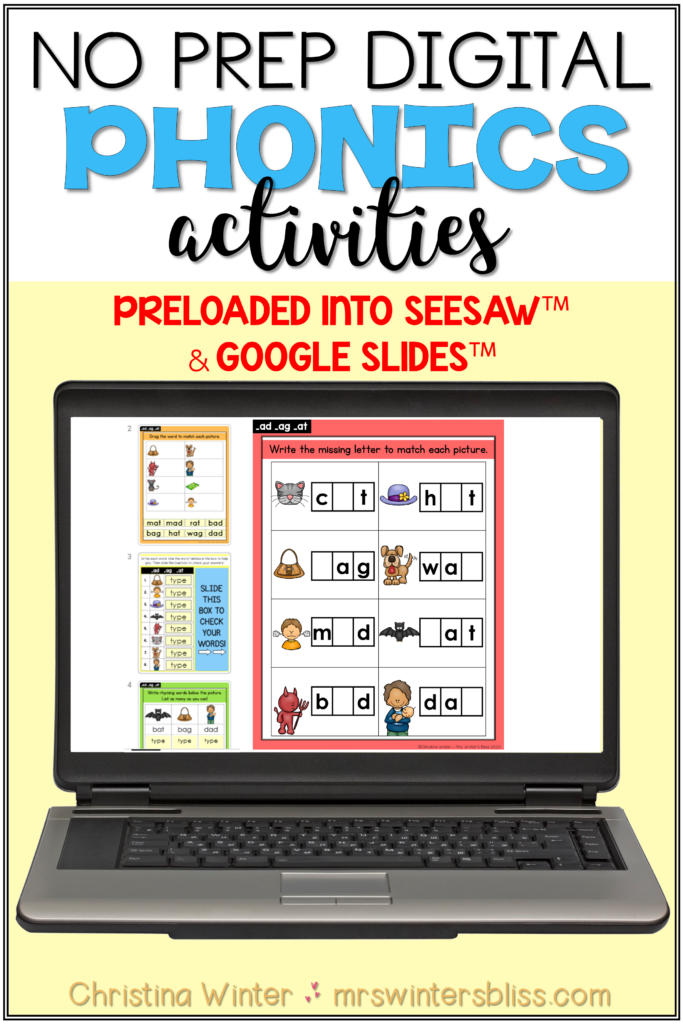
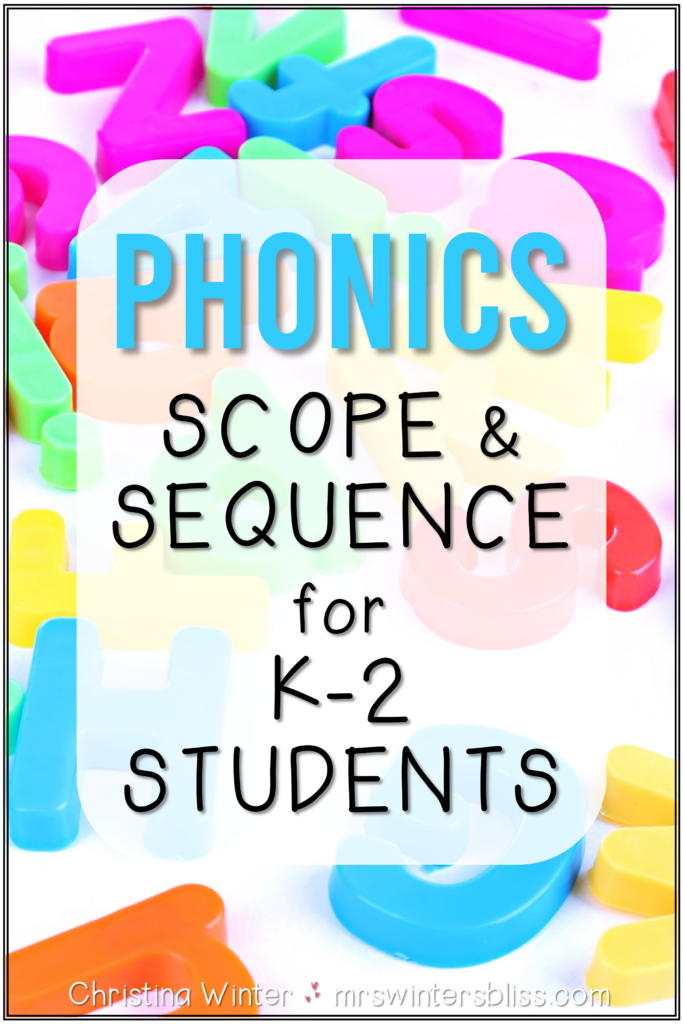
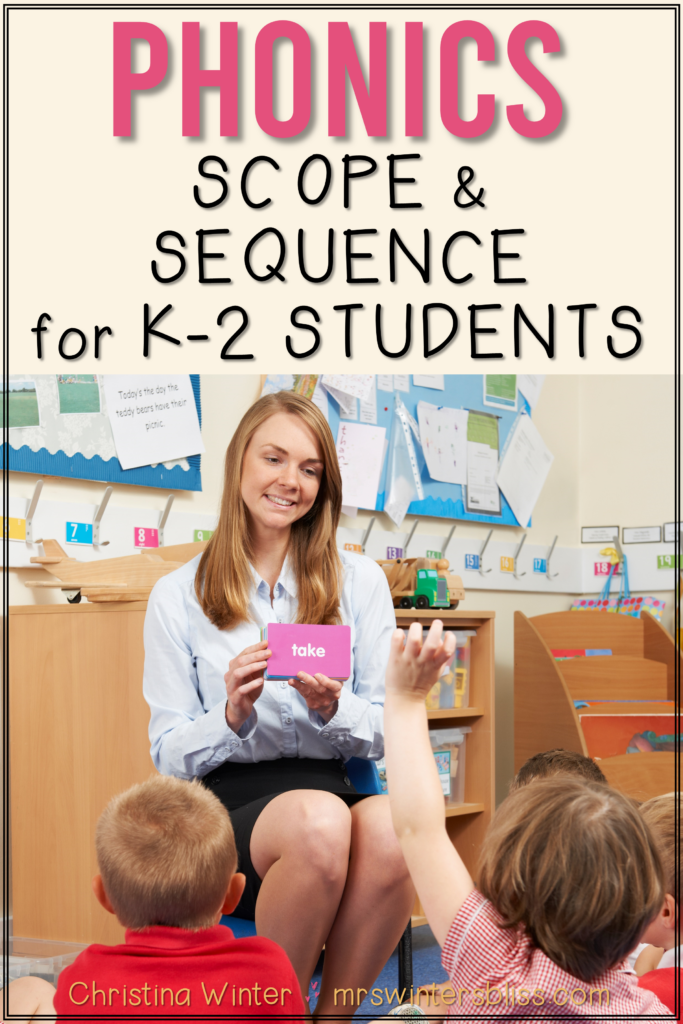


In this post, I offer a FREE, science of reading-aligned Scope and Sequence for Kindergarten, first and second grade. I examine why following a phonics scope and sequence is important, discuss common problems with phonics instruction, and share printable and digital phonics activities for K-2 students.
Too often it is assumed that learning to read is a natural process, like learning to talk or walk. But decades of research have shown us that learning to read doesn’t come naturally. English decoding skills are not intuitive. We must explicitly teach our students how to connect sounds with letters. We must teach phonics!
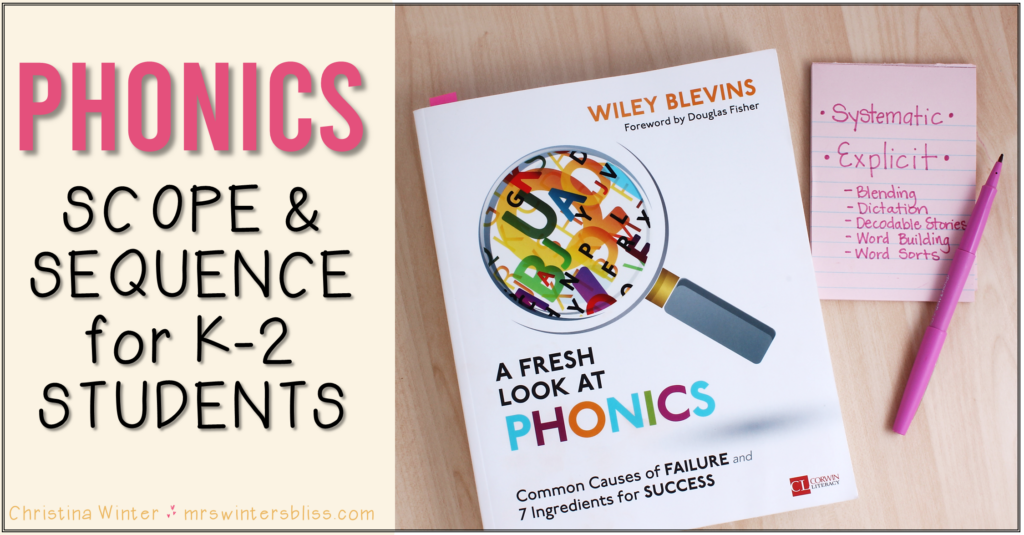
Note: This post contains an affiliate link. This means that, at no cost to you, I earn a few nickels should you choose to make a purchase through the link.
But even when you know phonics instruction is an integral part of literacy instruction, it can be overwhelming to know how to begin teaching it. There is not one single way to teach phonics, but as Wiley Blevins explains in his book, A Fresh Look at Phonics, phonics instruction must be systematic and explicit. This means it progresses through a specific scope and sequence that will help you look ahead to see where development is going, and intentionally scaffold your students’ learning.
According to Blevins, a strong phonics scope and sequence builds from the simplest to the most complex. It builds on previous learning, is created to teach students to form words as early as possible, and teaches high-frequency sounds before less useful sounds. It minimizes learning interference and allows for differentiation.
I realize your school may not provide you with a scope and sequence for phonics, so to help you out I’ve created a FREE DOWNLOADABLE SoR-aligned PHONICS SCOPE AND SEQUENCE FOR K-2!
>> Download this Printable Scope and Sequence HERE <<
A Problem with Phonics Instruction and How to Fix It
Students simply do not get adequate review and repetition. The goal of phonics instruction must be mastery, not exposure. Blevins believes a new skill should be systematically and purposefully reviewed for four to six weeks after being introduced. Don’t give up on it until all of your students can successfully apply the skill to authentic reading and writing experiences well after the initial introduction!
Most curriculums are pretty fast paced so you must be really be intentional about making time for review and repetition. In his book, Blevins suggests the following types of practice which will allow you to weave in the review and repetition your students will need for mastery.
- Blending work: List words with the new target skill as well as work skills previously taught.
- Dictation: Model how you transfer phonics skills to spelling, allow students to apply and try it out. Include words with patterns you have previously taught.
- Rereading decodable stories: Create a system where students reread stories independently or with a partner. Blevins suggests making “story sheets” by typing the stories out in pieces of paper and making copies for students. Then assign specific stories to reread each day. I love the idea of using decodable texts but worry that creating your own story sheets is just too time consuming for you as the teacher. That’s why I have created my own Decodable Passages Resource. This resource contains 60 decodable passages that align with a research-based, systematic phonics scope and sequence. You’ll also get activities for before, during and after reading. Take a closer look at the resource and download free decodable passages and comprehension questions here.
- Word building: Use a limited number of letter cards to build a series of words that vary by one or two letters. For example, words would be built in this sequence: up, cup, cut, but, bug and rug. Build in review by modifying the sequence to include a few previously taught skills. Add the short vowels a and i and the sequence becomes: up, cup, cap, cat, cut, but, bat, bug, big, rig, rag, and rug!
- Word Sorts: Give students word cards and ask them to sort them by related sounds or spellings. Include words with patterns you have previously taught.
But even with a scope and sequence to guide you and ideas for how to ensure mastery, it can be difficult to find specific phonics activities that meet those needs. So today I am excited to share with you my digital phonics activities for K-2 students!
They are going to save you HOURS of prep time plus your students will be so engaged in meaningful hands-on learning!
I created them using the scope and sequence in A Fresh Look at Phonics. Each activity focuses on a target skill and is paired with a review of skills that were previously taught to help give students the review and repetition they need to achieve mastery!
-
Sale Product on sale
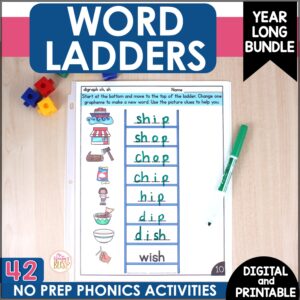 Word Ladders Phonics BUNDLE – digital & printableEarn 0 Reward Points
Word Ladders Phonics BUNDLE – digital & printableEarn 0 Reward Points$12.50Original price was: $12.50.$10.00Current price is: $10.00.Rated 5.00 out of 5 based on 4 customer ratings -
Sale Product on sale
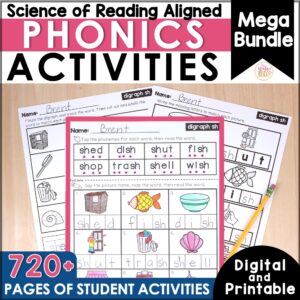 Phonics Activities Yearlong BUNDLE – Printable & Digital – Science of ReadingEarn 0 Reward Points
Phonics Activities Yearlong BUNDLE – Printable & Digital – Science of ReadingEarn 0 Reward Points$63.25Original price was: $63.25.$49.80Current price is: $49.80.Rated 5.00 out of 5 based on 5 customer ratings -
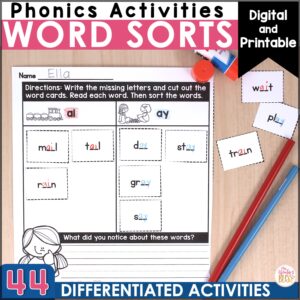 Phonics Word Sorts – DIFFERENTIATED – digital & printableEarn 0 Reward Points
Phonics Word Sorts – DIFFERENTIATED – digital & printableEarn 0 Reward Points
$13.00Rated 5.00 out of 5 based on 8 customer ratings -
Sale Product on sale
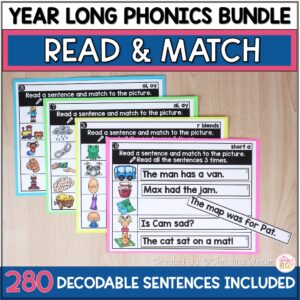 Sentence Matching Phonics Bundle – literacy center & student printablesEarn 0 Reward Points
Sentence Matching Phonics Bundle – literacy center & student printablesEarn 0 Reward Points$16.00Original price was: $16.00.$12.80Current price is: $12.80.Rated 5.00 out of 5 based on 2 customer ratings -
Sale Product on sale
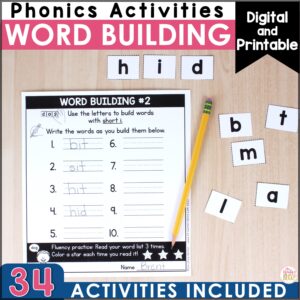 Phonics Word Building – Printables + premade Seesaw & GoogleEarn 0 Reward Points
Phonics Word Building – Printables + premade Seesaw & GoogleEarn 0 Reward Points$30.00Original price was: $30.00.$24.50Current price is: $24.50.Rated 5.00 out of 5 based on 1 customer rating -
Sale Product on sale
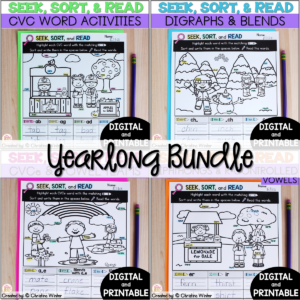 Seek, Sort, Read Phonics Bundle – digital & printableEarn 0 Reward Points
Seek, Sort, Read Phonics Bundle – digital & printableEarn 0 Reward Points$12.00Original price was: $12.00.$9.60Current price is: $9.60.Rated 5.00 out of 5 based on 1 customer rating
Digital Phonics Activities
These engaging, interactive DIGITAL activities will help your Kindergarten, first grade, and second grade students master phonics skills and spelling patterns! This NO PREP resource has been PRELOADED for you! It just takes one simple click to add them to your Seesaw library or Google Drive! Then all that’s left to do is assign them!
The bundle includes 300+ pages of interactive, self-checking, digital activities focused on phonetic word patterns broken up into word study units. Each unit focuses on one phonetic skill with tasks of varying levels to help you easily differentiate learning.
Included in the year-long Digital Phonics Activities Bundle:
- CVC Activities
- Digraph Activities
- Consonant Blend Activities
- Silent E Activities
- Long Vowel Team Activities
- Diphthong Activities
- R-Controlled Vowel Activities
Phonics Sentence Matching Bundle
Students will love these interactive phonics sentence activities! This resource includes both PRINTABLE decodable sentence worksheets perfect for your literacy centers, as well as NO PREP DIGITAL activities! The slides have all been PRELOADED for you! With one click you’ve added them to your Seesaw library or Google Drive! Then just assign them to your students!
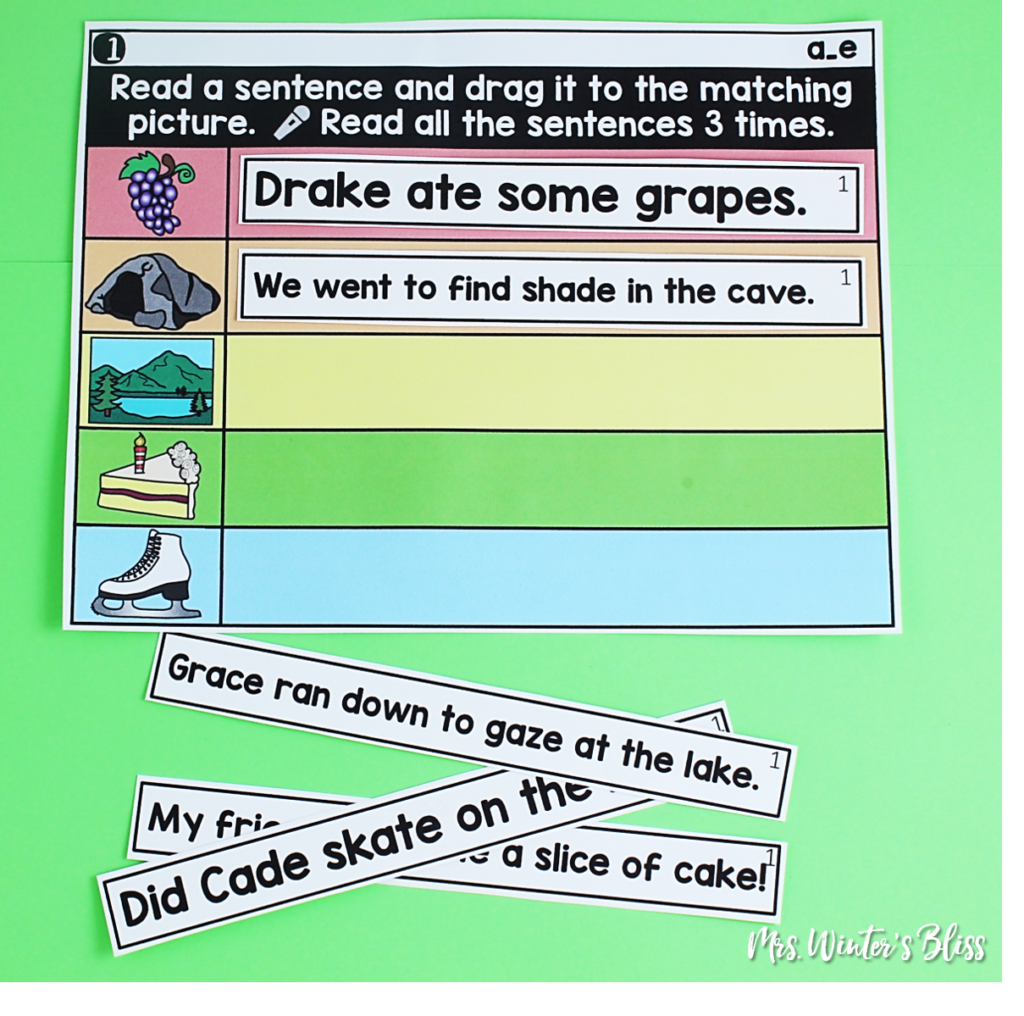
There are 265 decodable sentences with early sight words. Students will demonstrate comprehension by reading and matching the picture, then reread the sentences to build reading fluency. There are 5 sentences on each slide/printable for students to read.
Included in the year-long decodable Phonics Sentence Matching Bundle:
- CVC Sentences
- Blend & Digraph Sentences
- Long Vowel Sentences
- Diphthong & R-Controlled Vowel Sentences
Phonics: Seek, Sort, Read
Students will love these hands-on phonics activities! They will seek words by indicated phonetic pattern, sort them into columns, and read the lists of words.

There are 40 printable worksheets that are perfect for morning work, literacy centers, or homework. Also included are PRELOADED digital activities created in Google Slides and Seesaw, all the prep work is DONE for you, just click the link and add these activities to your drive or library!
Included in the year-long Seek, Sort, Read phonics bundle:
- CVC (short vowels)
- Digraph & Blends
- CVCe (silent e) & Long Vowels
- Diphthong and R-Controlled Vowels
The activities in each of the bundles all follow the same format. This means you don’t have to waste time teaching procedures and expectations for each and every task you assign. Once students have gotten the hang of one of the activities, they’ll be clear on how to complete the others. All you have to do is assign them! And with so many activities included in each bundle, you are sure to have enough phonics activities to last you all year long!
-shop this post-
-
Sale Product on sale
 Word Ladders Phonics BUNDLE – digital & printableEarn 0 Reward Points
Word Ladders Phonics BUNDLE – digital & printableEarn 0 Reward Points$12.50Original price was: $12.50.$10.00Current price is: $10.00.Rated 5.00 out of 5 based on 4 customer ratings -
Sale Product on sale
 Phonics Activities Yearlong BUNDLE – Printable & Digital – Science of ReadingEarn 0 Reward Points
Phonics Activities Yearlong BUNDLE – Printable & Digital – Science of ReadingEarn 0 Reward Points$63.25Original price was: $63.25.$49.80Current price is: $49.80.Rated 5.00 out of 5 based on 5 customer ratings -
 Phonics Word Sorts – DIFFERENTIATED – digital & printableEarn 0 Reward Points
Phonics Word Sorts – DIFFERENTIATED – digital & printableEarn 0 Reward Points
$13.00Rated 5.00 out of 5 based on 8 customer ratings -
Sale Product on sale
 Sentence Matching Phonics Bundle – literacy center & student printablesEarn 0 Reward Points
Sentence Matching Phonics Bundle – literacy center & student printablesEarn 0 Reward Points$16.00Original price was: $16.00.$12.80Current price is: $12.80.Rated 5.00 out of 5 based on 2 customer ratings -
Sale Product on sale
 Phonics Word Building – Printables + premade Seesaw & GoogleEarn 0 Reward Points
Phonics Word Building – Printables + premade Seesaw & GoogleEarn 0 Reward Points$30.00Original price was: $30.00.$24.50Current price is: $24.50.Rated 5.00 out of 5 based on 1 customer rating -
Sale Product on sale
 Seek, Sort, Read Phonics Bundle – digital & printableEarn 0 Reward Points
Seek, Sort, Read Phonics Bundle – digital & printableEarn 0 Reward Points$12.00Original price was: $12.00.$9.60Current price is: $9.60.Rated 5.00 out of 5 based on 1 customer rating
I hope the information I’ve shared today is helpful to you as you work to make a systematic plan for what phonics instruction will look like in your classroom, and that the resources will make that plan feel more easily attainable!
–PIN for LATER–










